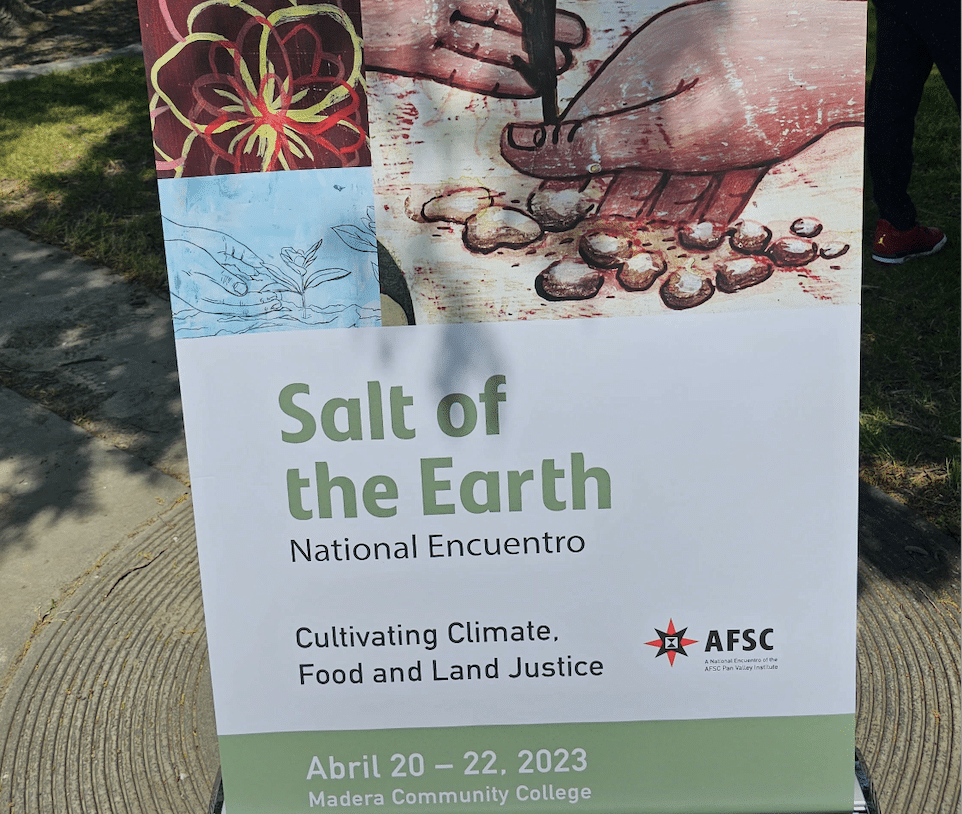On Earth Day, April 22, I had the distinct pleasure of delivering the keynote address at the Salt of the Earth National Encuentro: Cultivating Climate, Food, and Land Justice convening in Madera, California. This convening was hosted by the Pan Valley Institute, the first-ever immigrant and refugee-led popular education center in California’s Central Valley. This convening brought together farmers and farm workers, artists and activists, organizers and elected officials to engage in three days of experiences, performances, and conversations focused on the joys and concerns of residents and dependents of California’s Central Valley.
I have been all over California, from the north of the state in Eureka and Ukiah, to the Bay Area of Oakland and San Francisco, to down South in Los Angeles and San Diego, but this was my first trip to the Central Valley. And it was remarkable.
According to the U.S. Geological Services, California’s Central Valley supplies 8% of U.S. agricultural output and produces 25% of the nation’s food, including 40% of our fruits, nuts and other table foods. All on less than 1% of the nation’s farm land.
Coming from Mississippi, I am not new to industrial scale agriculture, a drive through the Mississippi Delta it’s wall-to-wall cotton, soy beans, and corn. But if you have never been to the Central Valley, it is difficult to imagine the scale of the production in this area that runs across eight counties and stretches between 40-60 miles wide and runs about 450 miles long. All in all, more than 7 million acres. For comparison, the state of Mississippi is only 340 miles in length and spans only 30 million acres.
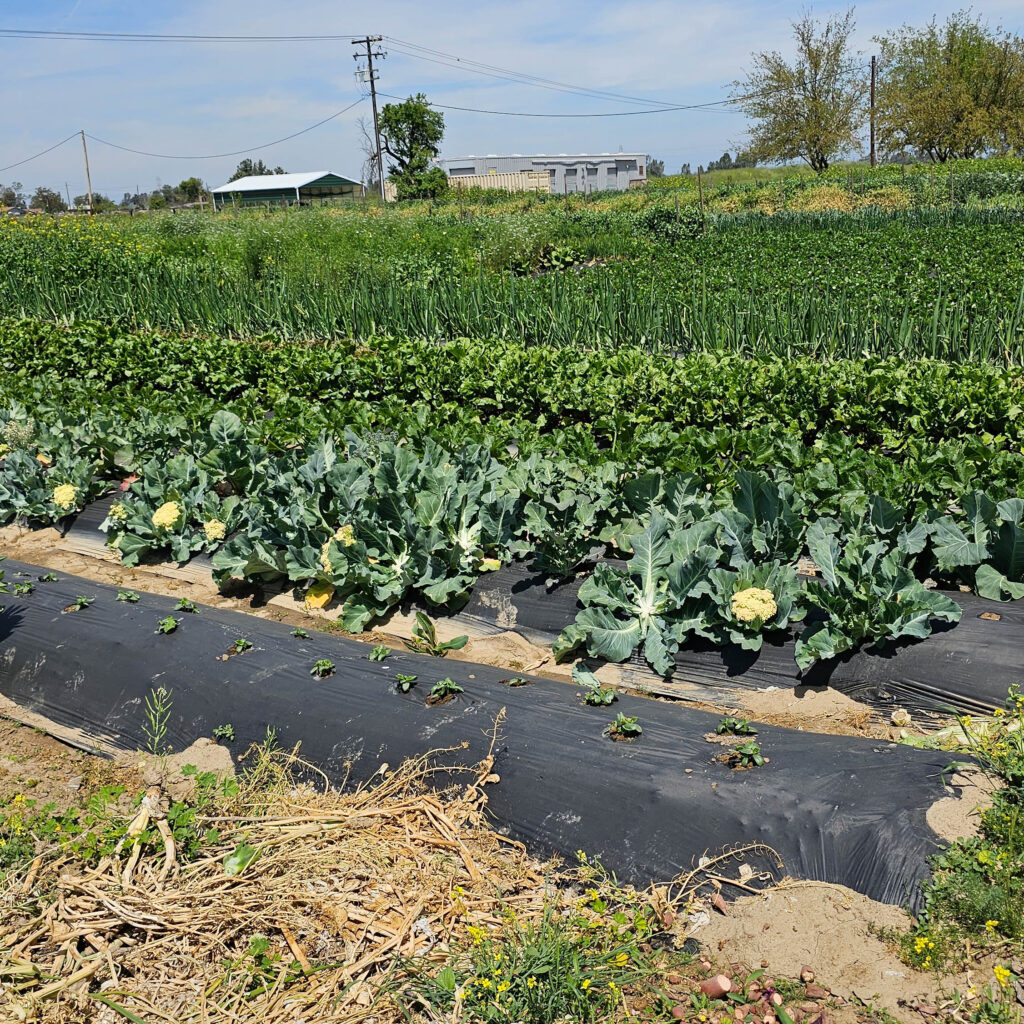
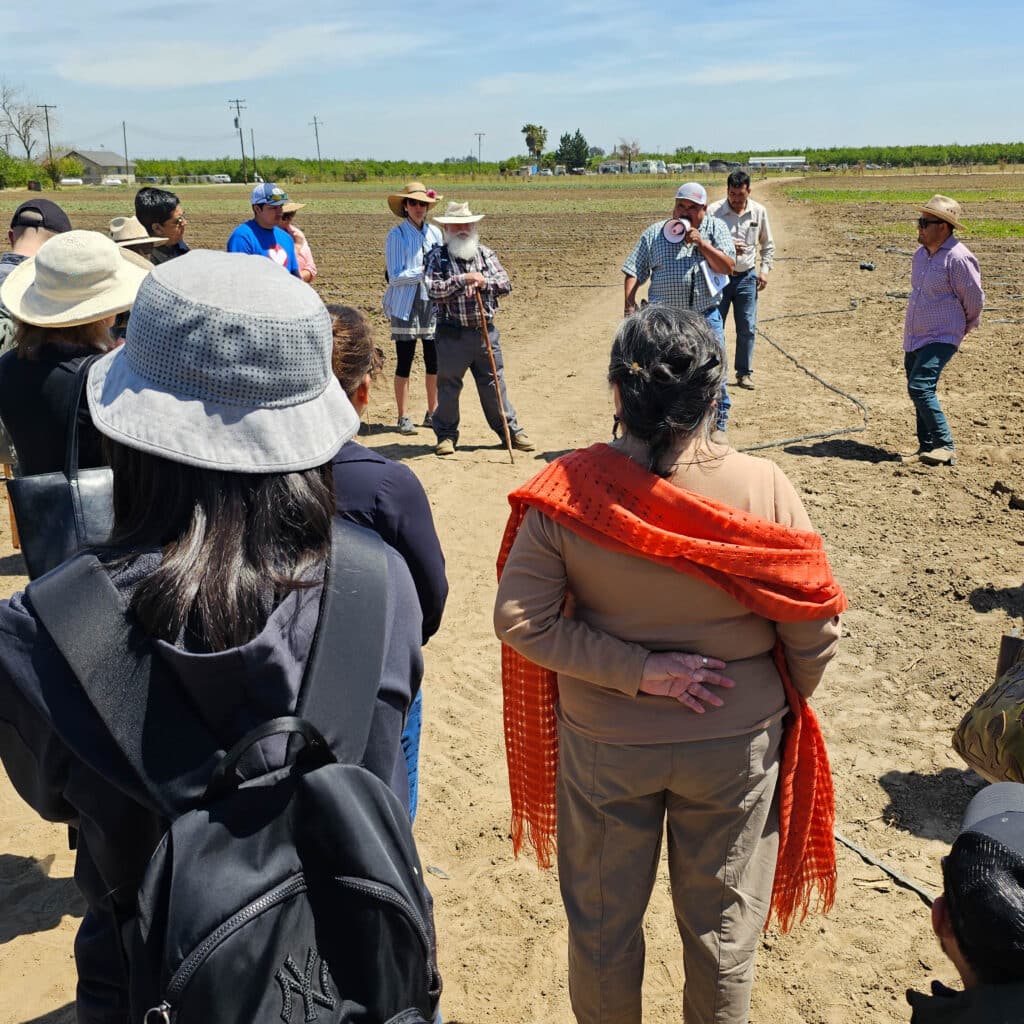
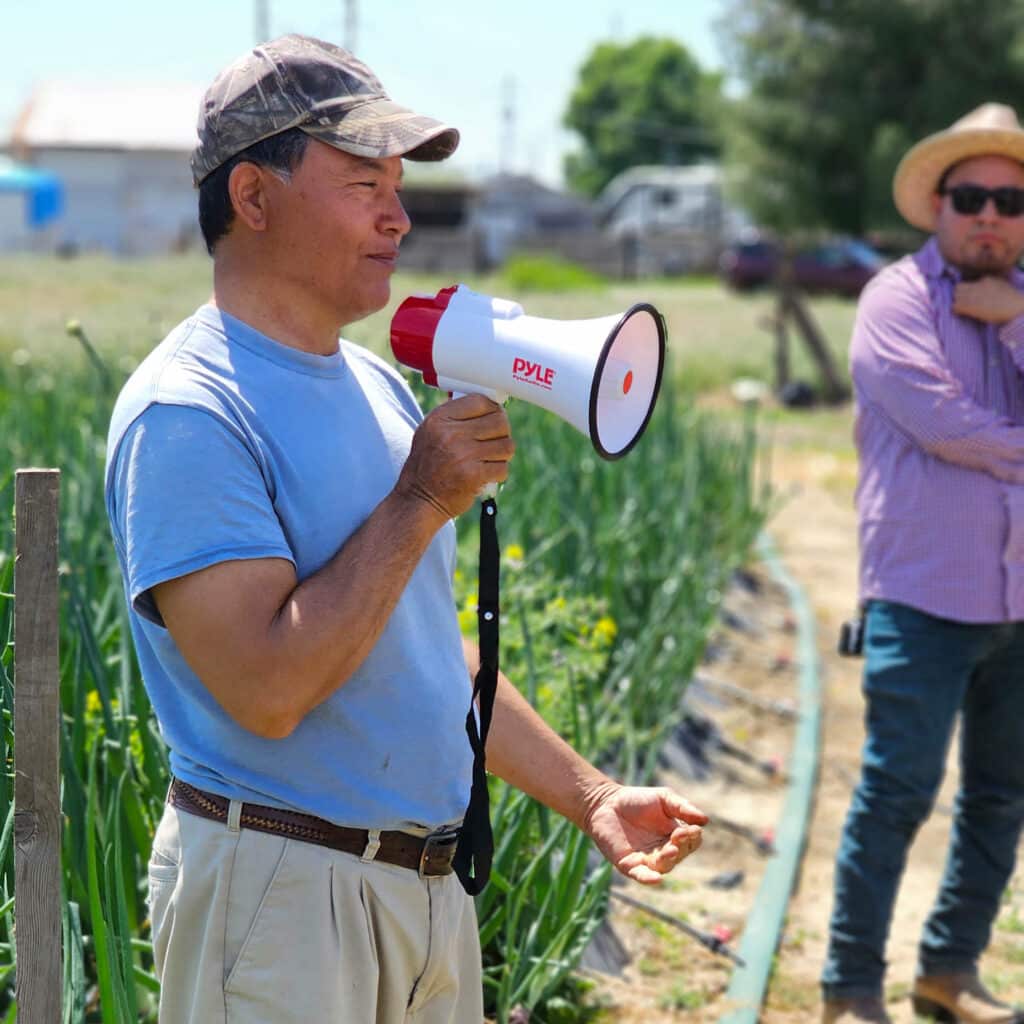

My favorite part of the convening was the Round Table on Wheels, a mobile farm tour of small organic farms. The tour was guided by Juan Santiago, who works with Feed the Hunger Fund providing on-the-ground support to small farmers with funding, technical assistance, and other means of support. Juan comes from a family of farm workers that immigrated to the Central Valley from Oaxaca, Mexico. He provided background on some of the fundamental challenges facing small farmers working to make a living and provide alternatives to the industrial agribusiness that is making life challenging for communities throughout the region.
These issues were further grounded by the testimonies provided by the small farmers themselves. The tour featured four farmers: Liset Garcia (Sweet Girl Farms), Ia Yang, Ramon Flores, and Saetern Cheng. (I have included their bios from the program below.) These farmers are the salt of the earth. They make it all possible. There is no food without these folks doing what they do. I also would be remiss if I didn’t mention that Saetern Cheng grows the most beautiful and delicious strawberries I have ever had in my life. NO CAP!!!
Access to Fresh Water
The big issue was access to water. California has been experiencing an historic drought over the past several years, although this year offered a bit of a reprieve with historic flooding and snowfall in the mountain region. One extreme to the other. But the crops that are being produced in the valley, now predominantly almonds and pistachios, require enormous amounts of water to produce.
Which means less water for smaller, organic growers. The competition for water is intense and has driven many farmers out of the market.
Another issue is the amount of pesticides and fertilizers that are used by the industrial farms and the impact they have on the overall water quality as these chemicals leach into the water table and contaminate the land.
According to the California Water Impact Network, almonds use approximately 4.9-5.7 million acre-feet of water per year, which is up to 17% of the total agricultural water use in California and 13% of the total developed water supply.
But what was made abundantly clear from my trip is that the immigrant and refugee farmers are the backbone of the Central Valley’s ability to produce the volume of produce, fruits, and nuts that it does. They are the workers that impact the majority of dinner tables across the country. Their health and wellness is deeply connected to our ability to have fresh produce in our grocery stores and restaurants. They should be prioritized in developing equitable agricultural infrastructures in the Central Valley. It is an issue that we ALL should be concerned about and committed to figuring out. The most important lesson for me was that these farmers are farming because it is what they love.
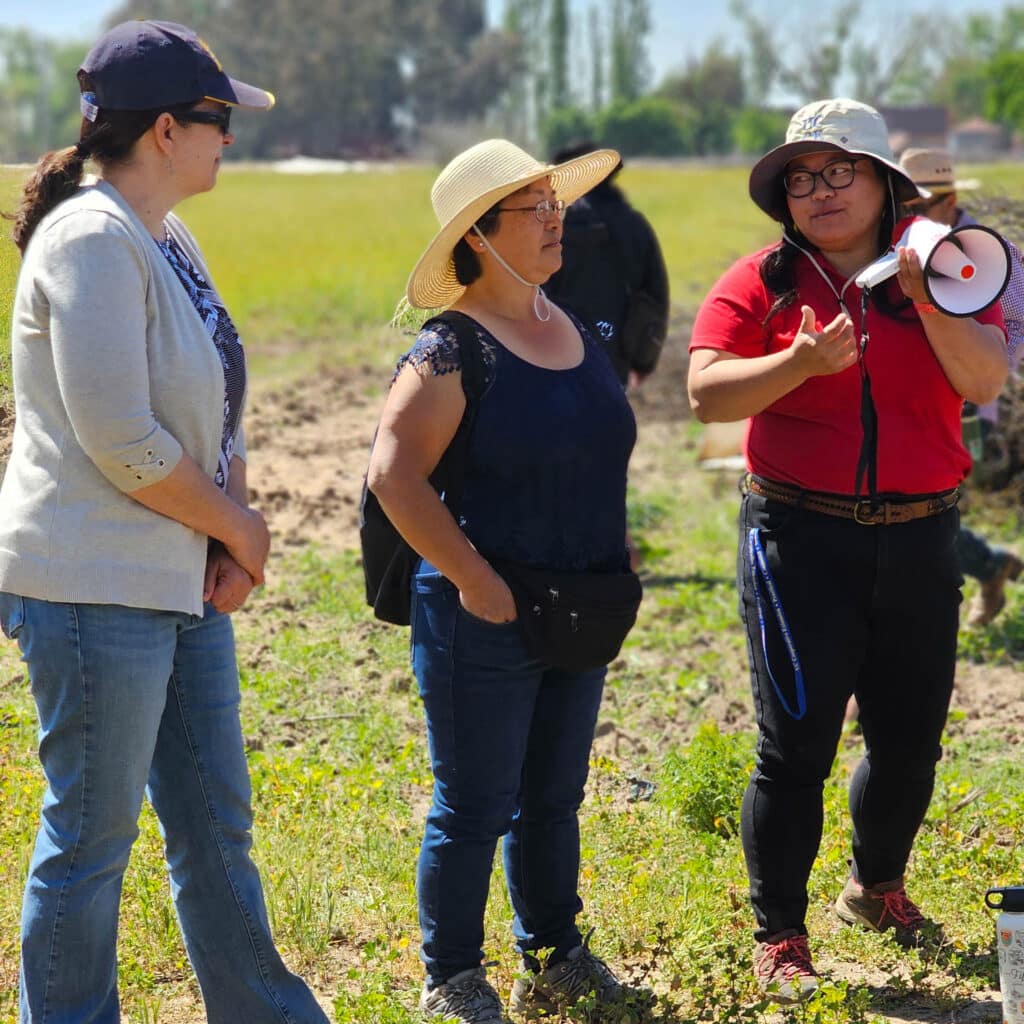
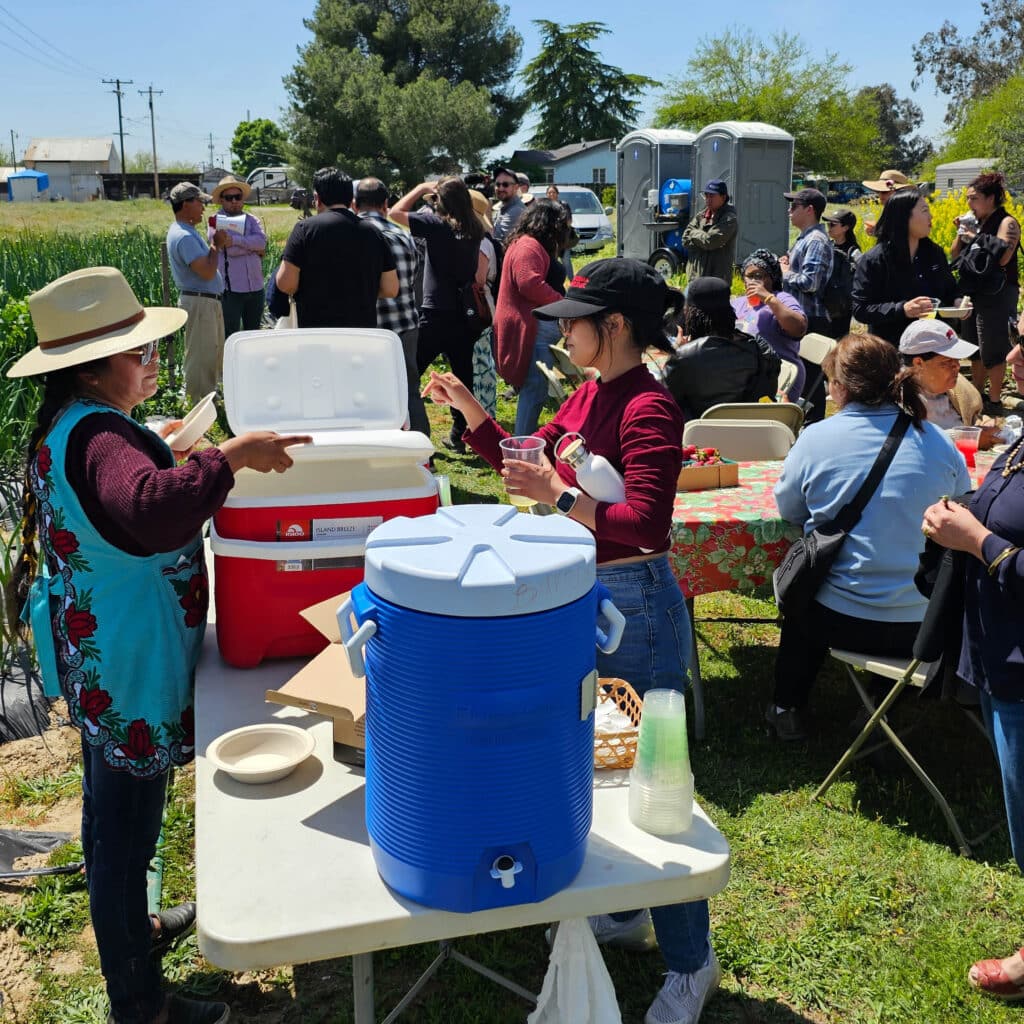
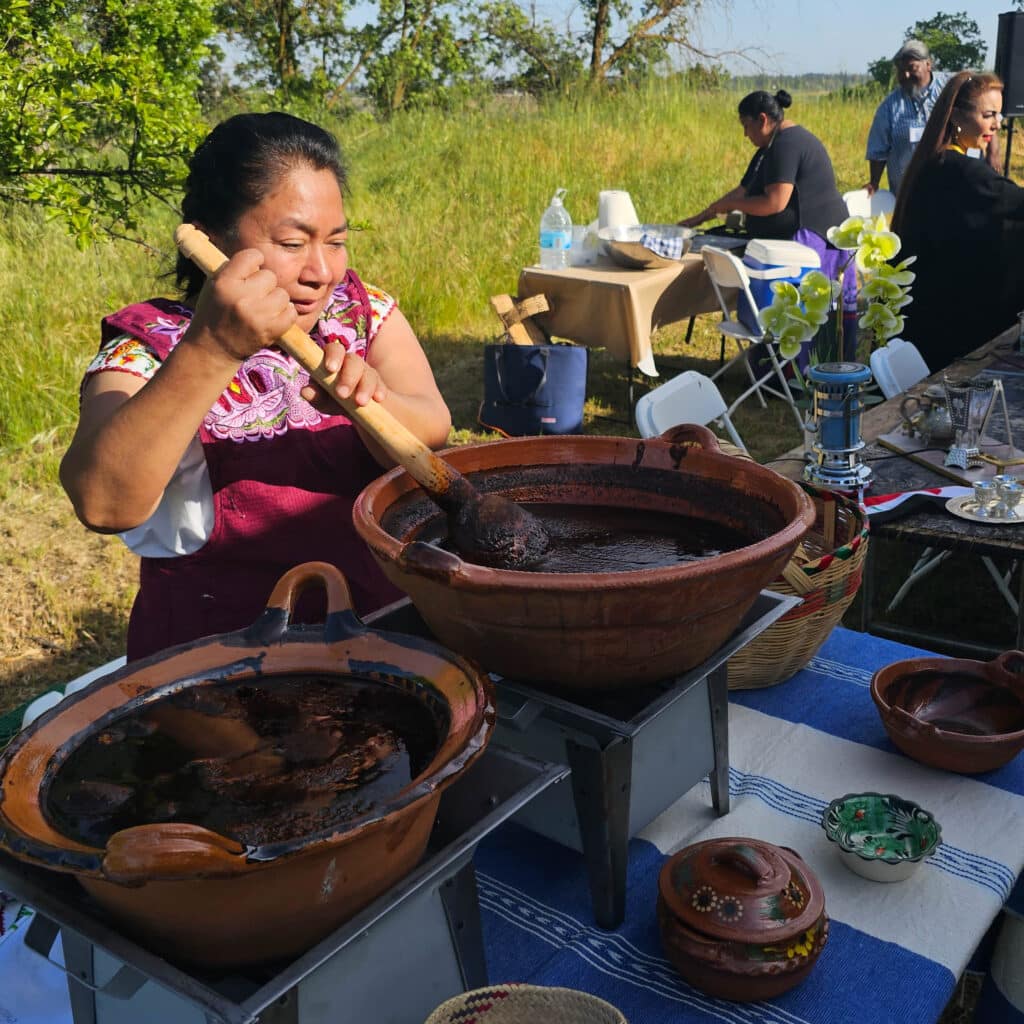
My other favorite part of the event was the Cultural Kitchen: A Taste of Home. This event featured culinary artists from the region, including Carmen and Cecilia Moreno from the Tachi people, indigenous to the Central Valley; mole from Roas Hernandez, co-founder of Colectivo Sabor a Mi Tierra – without a doubt, the best mole I have ever had!!!!; and Iraqi cuisine from Dalya Hussein of the Fresno Interdenominational Refugee Ministry.
I also have to give a big shout out to La Banda San Martin Itunyoso, visual artists Jose Arenas and Narsiso Martinez, and theater artist Rodolfo Robles Cruz, PVI ArteVism fellow, whose one act play, La Norteña closed out the event on Saturday afternoon. They all made giant contributions to the art for the event.
I am deeply appreciative to Myrna Martinez Nateras and Erica Kohl for inviting me to participate in the Encuentro. I am changed by the experience and will definitely be coming back to visit and learn from the amazing work of PVI and the impeccable skills of the farmers I met during my time. I have definitely found my people.
Bios from Farm Tour
Liset Garcia is the founder, operator, and farmer at Sweet Girl Farms. She has been an entrepreneur since childhood, helping her parents sell produce from rundown pickup trucks on Los Angeles sidewalks, flea markets, and swap meets. Over the years, she and her family acquired their beloved farm in Reedley, where they’ve permanently settled. Liset continues selling farm fresh produce she and her parents grow at her farm stand known as Sweet Girl Farms. She holds her Master of Public Health from the University of Southern California. She attended the University of California, Merced, for her Bachelor of Science in Molecular and Cell Biology with a minor in psychology. Additionally, she completed Reedley College’s healthcare interpreter certificate program and continues to pursue online courses in the human biology arena as a hobby.
Ia Yang came to the U.S. from Thailand in 1979 as a refugee with her mom and two brothers. The family settled in Long Beach, and Ia later moved to Fresno with her husband, who grew up there. Her in-laws were farmers, and in 1990, the family purchased a house with some land they farmed on the side. They ship the vegetables and herbs they grow to St. Paul, Minn., and do business with buyers and distributors in San Francisco. Ia is grateful to have raised her five children on their family farm, where they could play in the open space.
Ramon Flores is an immigrant from Mexico. He has been a farmer for the past 30 years, mostly in the U.S. Ramon operates a 20-acre organic farm in Madera County. Like many small-scale organic farmers, Ramon sells to a food aggregator on the Central Coast.
Saetern Cheng: Satern and his wife, Thae, are refugees from Southeast Asia. For 25 years, they have been farming in Madera, where they lease about 10 acres of land. They cultivate mainly specialty crops and berries such as blackberries and strawberries. They also operate a fruit stand. Their farm recently changed ownership, and the new owner wants them to move out. They are currently looking for a property to continue their farming business.


